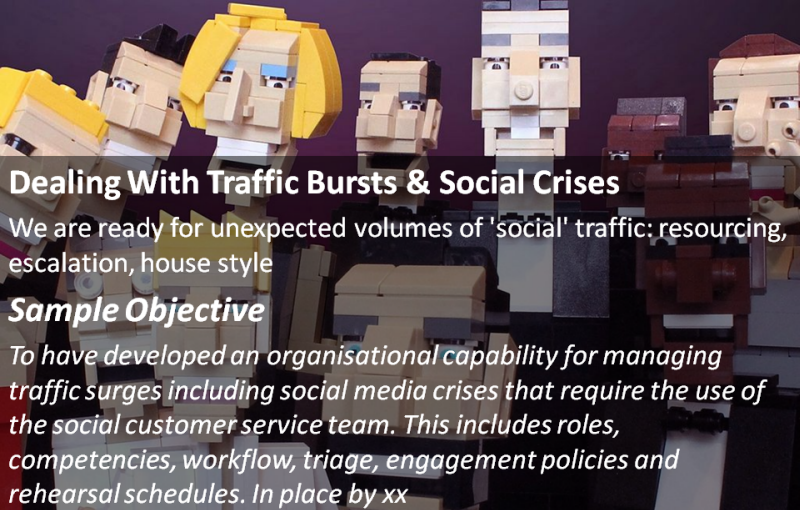
Traditional contact centre workforce planning exists because there comes a point when spreadsheets can no longer keep up with the complexity of matching the variety of customer services demand against the right expert resource.
Social customer service presents a similar challenge. With a few differences.
As of now, social customer service resourcing is on a much smaller scale. The largest dedicated team I’m aware of has 260 advisors. Compare that with contact centres teams that scale to many thousands for large B2C organisations.
However the need to be ready for demand beyond ‘business as usual’ is just as important in both cases. Seasonal surges that repeat year on year can be easily factored in. One off, yet known events such as major product releases/recalls, can also be analysed for resource implications. Beyond these, more sophisticated strategies are needed to cope with unpredictable situations.
For a start, there are unexpected one-offs. These can be caused by anything from extreme weather, outages, major product/service failures, health/food scares etc. They generate demand for all forms of customer service.
However within that, there are some unique to social customer service. Where do mobile/cell phone customers go when the network crashes? Or when the contact centre staff could not make it in? Or when it becomes ‘out of hours’ for traditional customer service? Or when a service issue turns sour and goes viral? Increasingly the answer is that customers flock to social channels.
When an organisation faces their first social media crisis, it is a test of many things.
Initially around their responsiveness. How quickly are they engaged once the crisis breaks? Secondly, how effective is the response in terms of reducing the volume of questions through proactive communication? Throughout the crisis, are they maximising overall sentiment by balancing legally approved responses with a ‘human touch’? Once it is all over, are they able to learn from what happened and be more prepared next time?
It is no coincidence that leaders in social engagement best practice have all been catalysed by some form of crisis. With that experience, they have invested in integrated strategies of policy, education, reskilling, effective social listening and ongoing rehearsal for the crisis team. This ‘playbook’ becomes the organisation’s response to dealing with these periods of extreme social engagement.
Other competencies in the framework for social customer service excellence can be accessed in ‘Related Content’.




